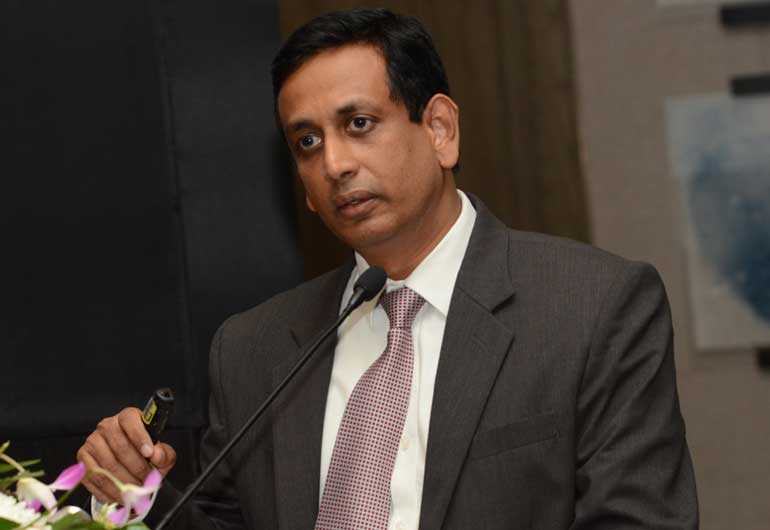Friday Apr 19, 2024
Friday Apr 19, 2024
Thursday, 7 November 2019 00:21 - - {{hitsCtrl.values.hits}}

John Keells Properties Sector Head Nayana Mawilmada – Pic by Shehan Gunasekara
By Charumini de Silva
A top real estate expert last week called for the right policies and incentives to fully harness the transformational value of the Colombo Port City.
Speaking at the ‘Transforming Sri Lanka Forum – Empowering the Game-Changers’, organised by the Pathfinder Foundation, John Keells Properties Sector Head Nayana Mawilmada highlighted the need to bring in attractive policies for expatriates to own real estate, provide access to finance, stimulate housing closer to Colombo for potential Port City employees and aggressively promote and invest in an integrated mass transit network to make the project viable for investors as well as for the economy.
“The Colombo Port City has the potential to set a brand new benchmark for planned development. It will help in positioning Sri Lanka as a premier destination for real estate and housing in the region. If we harness it right with the right stimulus, even in a slower growth scenario the Port City can be a catalyst,” he added.
Mawilmada also noted that making Colombo more attractive for global real estate investors and resident expatriates was absolutely pivotal to the success of the Port City.
“Being in the industry, we know that the expatriates cannot buy real estate without a lot of red tape, which is a major hindrance. The last five Budgets have talked about resident visas for investors but it is still to see the light of day,” he stressed.
Noting that these were low-hanging fruit that Sri Lanka needed to capitalise on to increase expat numbers, he also pointed out that Sri Lanka needed to loosen credit policies and access to finance if the country wanted to look at the long-term expat population in Sri Lanka.
“Allow expats working in Sri Lanka to use their domestic wages for real estate purchases and provide access to credit for foreigners to purchase real estate,” he stressed.
Accordingly, the total population at the end of implementation was estimated at around 250,000 including both for the resident and transient population.
“If you look at the Port City master plan, they projected a population at a full build-up time of a quarter of a million people. The projected resident population is 75,000 people. The direct and indirect employment potential during the initial 10 years of construction period is estimated at 10,000-14,000 and these include overseas and local consultants for the design and monitoring of the Port City. This projection of population growth in the Environmental Impact Assessment (EIA) and again looking at this quarter of a million people over 25 years, is a very aggressive forecast,” he stated.
Although housing these people was going to be a challenge, he stated that it was an opportunity that they hoped policymakers would take advantage of and deal with in the near future.
Addressing the urban challenge, particularly for the middle-income and upper-middle-income segments, to make the Port City viable, Mawilmada suggested that the Government should bring down construction costs by eliminating para tariffs, getting rid of protectionism on building materials and creating greater competition.
He said the Government needed to look at incentivising developers particularly to build middle-income housing spaces, not necessarily in the premium housing space, but by releasing around 200 hectares of core city lands and improving access to mortgage finance for first-time homebuyers.
Mawilmada also called on the Government to initiate an aggressive drive to promote and invest in an integrated mass transit network for the city, adding that Sri Lanka needed to start thinking about congestion pricing.
“We need to really take the transportation issue by the horns. Peak hour travel time is 7-8 kilometres per hour. An average commute is about 1.5-2 hours each way. As the economic cost is high, we have millions of people moving at ridiculously slow speeds. Thus, we need this major transition to mass transportation and to couple that with active disincentives for car ownership and parking regulation. It is the only way forward.”